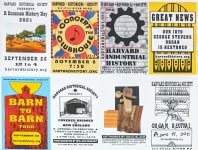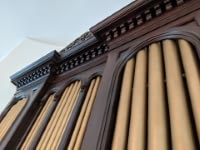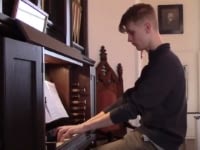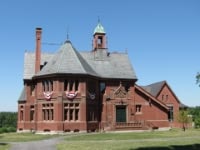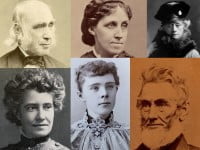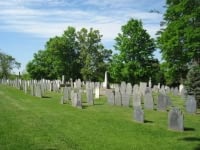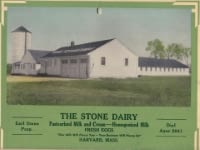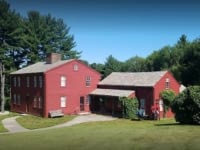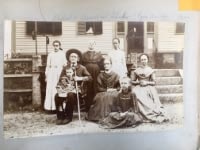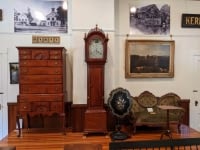The Harvard Historical Society Website Gets a Makeover!
June 26, 2024A Fresh Look, A Deeper Dive
Our website now boasts a modern and user-friendly design, making it easier than ever to navigate and explore the stories that have shaped our town.
Discover the Lives that Built Harvard
Delve into articles that explore the lives of the people who have called Harvard home. From prominent figures to everyday citizens, their stories shed light on the social and cultural fabric of our community.
Explore the Landmarks that Define Us
Embark on a virtual tour of Harvard’s historic buildings. Learn about their significance and the events that transpired within their walls.
Stay Connected to Our Community
The new website serves as a central hub for all things Harvard Historical Society. Stay up-to-date on upcoming events, lectures, and exhibits. Explore our archive of past events, where you can revisit programs like the living history presentation, “Harvard in the First Half of the 20th Century,” or delve into the self-guided tour of the Center Cemetery.
This is only the beginning
This new website is just the first chapter! We’ll be continually adding fresh content, so be sure to check back regularly.
Two Harvard men are on a mission to preserve town history and public access to it
BY CARLENE PHILLIPS · FRIDAY, JUNE 14, 2024
Two men, creative and technologically adept; two men committed to preserving Harvard’s history; two men wanting to make town records readily accessible to the community. Two such men are Joseph Theriault and Patrick Vallaeys, and they have recently been collaborating to merge their individual research efforts in a revised and greatly expanded Harvard Historical Society website, harvardhistory.org.
In 2012 Theriault created the website FORUM for Historic Harvard. He described the impetus for the site in a recent conversation. As chair of the Historical Commission, he saw an opportunity to collaborate with other historical organizations, like Fruitlands and Freedom’s Way. He was most familiar with the work of the Harvard Historical Society, where he had served as president of the board of directors. He knew that until her death in 1992, town historian Elvira Scorgie had researched and recorded deeds of historical homes in Harvard and that 200 homes had been documented in a 1994 survey of historic properties by Claire Dempsey. This information, the “Local Register,” of which the library had a copy, was now part of the State and National Registers of Historic Places. Theriault wanted to make that register accessible to the public, so he scanned and digitized the description of each property and put the pages on his new site, FORUM for Historic Harvard.
In exploring the Massachusetts Cultural Resource Information System online database, Theriault discovered that in addition to the 200 houses in the Local Register, there were some 300 more entries for Harvard and Devens. He said he recalled thinking, “Wow, we have some work to do to preserve our historic assets.” FORUM was the perfect place to document these sites, including lesser known landmarks like Theriault’s favorite, Jonathan Prescott’s mill pond where he built the town’s first mill in 1668.
FORUM snowballs
Word spread and the website started “snowballing,” with new sections that included “many aspects of Harvard’s historic treasures.” Theriault said the part of FORUM that he enjoys most is the “Highlight Our Historic Places” page, which includes “Historic Place of the Month” and “Our Shakers, Their Burial Places and Their Biographies.” He said Still River resident Roben Campbell generously extended her expertise on the Shakers by starting a series of short biographies of influential members of the group in Harvard Shaker Village. For other parts of the website, Theriault called Ayer Road resident Susan Lee “my great savior,” saying her research into house histories and genealogy had been invaluable.
With the possibility of establishing a dialogue with visitors, Theriault added a blog to the website in 2012. He said the website typically gets 20 to 25 visitors a day, mostly from people who lived in Harvard or whose ancestors lived here, “but most gratifying is receiving and responding to comments or inquiries from the visitors. Reading a new comment from a visitor was like finding a new friend.”
Meanwhile, Patrick Vallaeys of South Shaker Road was working with the Historical Society to revise and expand its website, which had been mostly inactive for a number of years. His involvement came about through his wife, Marijke, who started volunteering at the Historical Society, influenced, no doubt, by next-door neighbor Judy Warner, administrative assistant for the society. She found that everything on the website was “years’ old.” Working with Warner, she created a good deal of content with pictures and documents from the society archives. Marijke had created websites for different organizations when her family lived in Los Altos, California. In fact, she has been running the website for the Newcomers Club there for 30 years. But in the case of the society’s website, she said she could go only so far until she had to ask Patrick to take it over. “He would do it better than I,” she said.
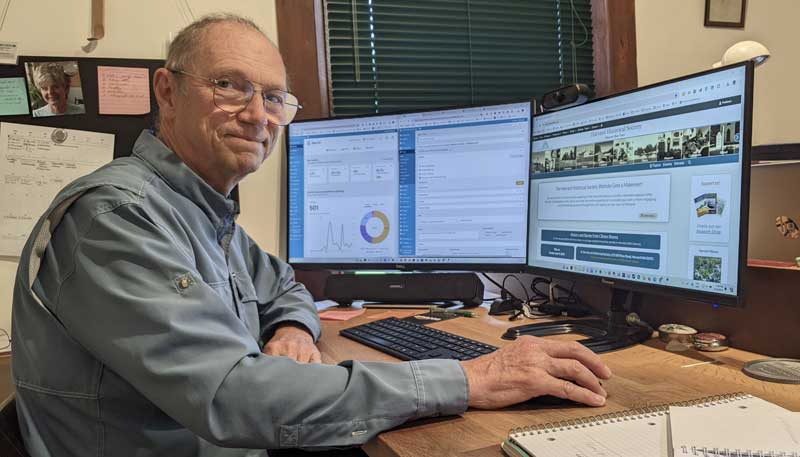
Volunteer Patrick Vallaeys of South Shaker Road with the newly revised Historical Society website. (Courtesy photo)
Vallaeys’ topical vision
Patrick Vallaeys, who describes himself as “out of Silicon Valley,” had created a number of websites; in fact, frustrated with the software in the early days of the internet, he had written his own website builder. Even with the huge improvement in software, he still combines his own tools with what is already available.
Vallaeys’ vision for the society website was one that had “tons of information” and was easy to access and navigate. To realize that vision he had to organize the site differently from the “menu tree” that most websites use but which is too unwieldy to handle a lot of content. He found the solution on big-newspaper sites, where a vast amount of information is organized by topics, not a big menu. For the revised society website, he set up a running banner of topics, such as People, Places, History, Museum. Within each topic are related pages that the user can access directly by links, and a single article can be found under different topics. “It’s more fun to go to related pages rather than back to the menu,” said Vallaeys. “And you see connections you hadn’t thought to look for.”
The other part of Vallaeys’ vision was that the site be “living.” Unlike sites where people can’t contribute to the menu, with topics as the organizing tool, it is easy to add new articles and update existing content. A small committee that included Warner worked with Vallaeys on adding content for the revised site. “And,” he said, “there’s a great deal more to do.”
Meeting and migrating
When Vallaeys and Theriault met, several months ago, they had an immediate connection because they both speak French. They shared information (though probably not all in French) about their website work, and when the idea of migrating information from FORUM to the society’s website came up, Vallaeys was very happy at the prospect of so much additional content and of “perpetuating Joe’s work.” For his part, Theriault said, “Patrick was a godsend. I was looking for a way to save at least some parts of the site before I ‘exit stage left.’ And Patrick came along with his web skills and his talent for organization and user-friendly design. This allows me to do what I originally intended to do, which was to collaborate.”
The first thing to migrate was the Local Register, the very first information that had appeared on FORUM. Theriault said, “At some point, when the Historical Society and Patrick tell me that they are finished with the FORUM website, I will dim the lights and take it offline. In the meantime, I will try to make it as easy as possible for him to migrate the sections and the data that are important to the Society and to Harvard.”
In the month preceding the launch of the revised site in May, there were 30 visitors to the old site. Vallaeys reported that in the two weeks since the new site has been up, there have been 450 different visitors, and 20% of them have revisited. “I think this is an excellent result and far beyond my expectation,” he said. The most visited site is a page called “Houses Then and Now,” created by Julian Iverson, Bromfield Class of 2022, to fulfill his community service requirement for graduation. Vallaeys said he encourages people to browse the website and see the interesting places to which the related pages within a topic can lead.
If the site is to be a living one, the society needs volunteers to write content and also some with web knowledge and technical skills. “It can’t be a one-man job,” said Vallaeys.
He is writing a manual for operating the site and is happy to train people. “I want the website harvardhistory.org to be the go-to place for everything Harvard history,” he said.
by Carlene Phillips, printed in the Harvard Press
Copyright Harvard Press, LLC, 1 Still River Road, PO Box 1, Harvard, MA 01451, 2025.
This work is licensed under a Creative Commons Attribution-NonCommercial-NoDerivatives 4.0 International License


